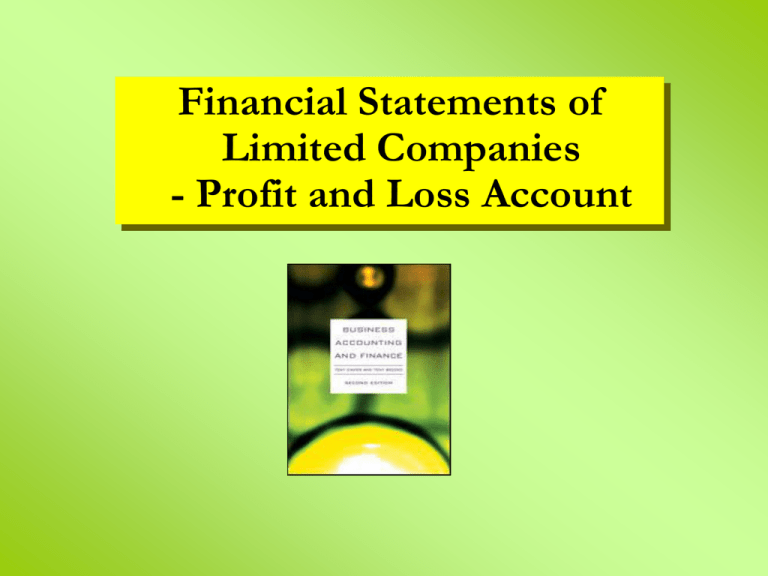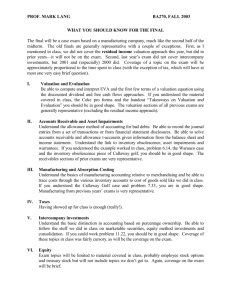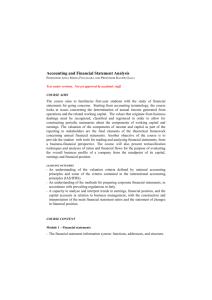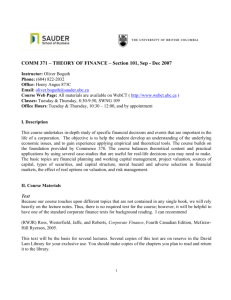CH03
advertisement

Financial Statements of Limited Companies - Profit and Loss Account Session Summary (1) learning objectives what is profit? the main elements of the profit and loss account levels of profit within the profit and loss account a profit and loss account format elements of the profit and loss account other profit and loss account disclosure Session Summary (2) reconciliation of movement in shareholders’ funds format 1 profit and loss account profit and loss and the balance sheet profit comparison from the use of various stock valuation methods stock value comparison from the use of various stock valuation methods profit and loss and cash flow Learning Objectives (1) describe what is meant by profit (or loss) outline the structure of the profit and loss account (income statement) of a limited company classify the categories of income and expenditure that comprise the profit and loss account appreciate the alternative profit and loss account formats Learning Objectives (2) prepare a profit and loss account explain the links between the profit and loss account and the balance sheet, particularly with regard to the valuation of fixed assets and depreciation stock and cost of sales debtors and the doubtful debt provision explain the links between the profit and loss account and cash flow appreciate the subjective aspects of profit measurement What is Profit? (1) The profit (or loss) of an entity may be considered from two perspectives: by considering the change in wealth between the start and end of an accounting period: total assets (TA) - total liabilities (TL) = equity (E) + profit (P) P = TA - TL - E What is Profit? (2) by considering the summarisation of all the trading and non-trading transactions through deducting total costs from total revenues (sales) that have occurred during an accounting period: profit (P) = total revenue (TR) – total costs (TC) P = TR - TC The Main Elements of the Profit and Loss Account Levels of Profit within the Profit and Loss Account A Profit and Loss Account Format Elements of the Profit and Loss Account Other Profit and Loss Account Disclosure extraordinary items exceptional items earnings per share reconciliation of movement in shareholders’ funds Reconciliation of Movement in Shareholders’ Funds Format 1 Profit and Loss Account • Profit Profit and and Loss Loss and and the the Balance Balance Sheet Sheet slide (1) 1 the profit and loss account is closely linked with the balance sheet in two ways: they both reflect the change in wealth of the business most transactions are reflected once in both the profit and loss account and the balance sheet valuation of the various items within the balance sheet is in accordance with the Companies Acts 1985/1989, accounting concepts and standards Profit Profit and and Loss Loss and and the the Balance Balance Sheet Sheet slide (2) 2 valuation of assets has a significant impact on the level of profit (or loss) earned by a business during an accounting period through: depreciation and fixed assets cost of sales and stocks bad and doubtful debts and trade debtors there are limitations to the profit and loss account, which like the balance sheet is an historical document, primarily due to the impact on costs of the use of alternative methods of valuation of assets and liabilities Profit Comparison from the Use of Various Stock Valuation Methods Stock Value Comparison from the Use of Various Stock Valuation Methods Profit and Loss and Cash Flow the profit (or loss) earned during an accounting period is not the same as the cash flow generated during the period the links between the two measures may be quantified and reconciled











